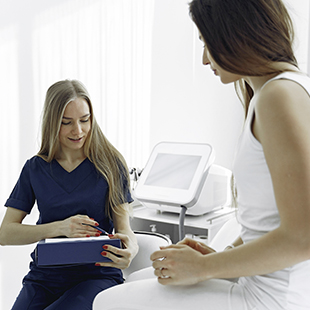How to create healthcare lighting that meets the needs of doctors – and patients
Different spaces have very different priorities, which need to be carefully balanced – here’s how

The feeling of a hospital is unmistakeable.
People say it feels clinical – and that’s because it is. That bright, clean, no-nonsense environment supports the meticulous work going on – and lighting is a major part of it.
Providing clear, high quality light for medical work is only half the challenge for lighting in healthcare settings. Making sure light has a positive effect on the wellbeing of patients and staff is also important.
Nowhere is it more important to have the right light than in a medical environment. Diagnosis and treatment require the highest possible precision. That means clear, powerful, accurate light. A colour rendering index (CRI) of 90+ is recommended, and glare and flicker must be prevented.
At the same time, light plays a key role in keeping patients comfortable and well and helping them recover as quickly as possible. It’s a tricky set of priorities to balance, especially when we add the requirements for lighting to be energy efficient, easy to maintain, and easy to clean to help prevent infections spreading.
For example, angles of view must be carefully considered when designing lighting. Imagine lying on a hospital bed, facing the ceiling, being pushed down a corridor. Lights glaring in your face will make this experience much less comfortable. Careful positioning of luminaires, and selection of products with the right light distribution properties, will help. In spaces designed for rest, recuperation and relaxation, light should provide a pleasant, comfortable atmosphere, with gentler distribution and a warmer colour temperature.
Soft, diffuse light helps to flatter patients’ appearance. This depends partly on the light fittings installed, but also on the colour and reflective properties of interior surfaces, so take these into account.
To help create the right atmosphere, a dose of daylight can work wonders. Studies show that natural light and views from windows can have positive effects on patients, including how well they sleep and how quickly they recover. Patients with conditions like dementia, will benefit particularly from natural light that helps keep their body clock in check. And the great thing about daylight is, it’s free.
When balancing the need for healthcare spaces to be clinical yet comfortable, it’s not always a case of one or the other. Some areas in a healthcare building will host a variety of tasks and activities, so lighting needs to be flexible. Well-designed controls can also make spaces more comfortable for patients and, of course, can help get energy consumption and carbon emissions down by making the most of daylight, or keeping lights off when no one is around.
It’s easy to think of patient wellbeing as the ‘soft’ side of healthcare lighting, but the benefits are real. Getting both sides right is key to creating light that supports the best possible experiences and the best possible outcomes.

